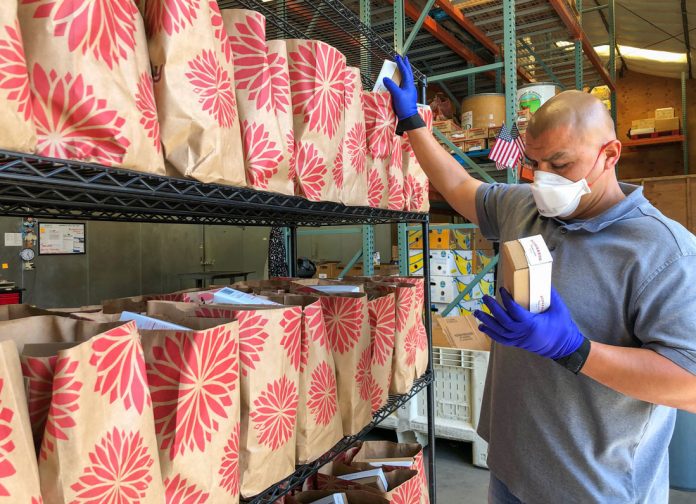
By Juan Reyes
San Benito County residents are now required to spend most of their time at home for the rest of April. And when people leave home for groceries or takeout, federal health authorities are now recommending everyone wear cloth face coverings in public spaces.
County officials this week offered residents some detailed advice on how to wear, acquire or even fashion their own cloth face coverings.
“Residents can wear a cloth face covering whenever they’re in public for essential activities such as shopping at the grocery store,” San Benito County Public Information Officer David Westrick said in a press release.
However, he said wearing a cloth face covering does not eliminate the need to physically distance oneself from others.
The county health officer also issued a new requirement that all “essential” businesses remaining open must implement a “social distancing protocol” for the duration of the order.
Westrick said those who are deemed as an essential employee and are interacting with the public can choose to wear a cloth face covering.
“Remember however, that a face covering must be used along with all of the other protective and preventive measures,” he said. “It will not help ‘flatten the curve’ if you go out more or stop taking other protective measures.”
A cloth face covering may be factory-made or sewn by hand or can be improvised from household items such as scarfs, T-shirts, sweatshirts, pillow cases or cotton sheets.
The face covering should be secured to the head with ties or straps or simply wrapped around the lower face.
Westrick said the defense against COVID-19 is frequent hand washing, avoiding touching the eyes, nose and mouth with unwashed hands, avoiding being around sick people and physical distancing, especially by staying at home.
“Cloth face coverings are not a substitute for physical social distancing and washing your hands,” Westrick said.
Westrick said there is limited evidence to prove how effective the homemade face coverings might be. Still, he mentioned the primary role is to reduce the release of infectious particles into the air when someone speaks, coughs or sneezes, including someone who might have COVID-19 but are asymptomatic to the virus.
A recent report shows that 25 percent of people infected with coronavirus don’t present any symptoms or fall ill but can still transmit the illness to others, according to Robert Redfield, the director of the U.S. Centers for Disease Control and Prevention.
CDC recommends wearing cloth face coverings in public settings such as grocery stores and pharmacies, especially in areas of significant community-based transmission.
The CDC’s website posted that the use of simple cloth face coverings can slow the spread of the virus and help people who may have the virus and “the cloth face coverings recommended are not surgical masks or N-95 respirators. Those are critical supplies that must continue to be reserved for healthcare workers and other medical first responders, as recommended by current CDC guidance.”
The county recommends discarding cloth face coverings that no longer cover the nose and mouth. They also mentioned masks should not have stretched out or damaged ties or straps that prevent it from staying on the face. If the masks have holes or tears in the fabric, get rid of those too.
San Benito County recommended a number of “do it yourself” videos that show how to make face coverings at home. The CDC also has a page with tips on how to make masks at home.
“Remember these are always used in addition to all the other necessary protective measures,” Westrick said. “Stay at home, but when you must go out or report to work, keep your distance and wash your hands or use hand sanitizer. And don’t touch your face.”
HOMEMADE MASKS
No Sewing Required:
Sewing Required:
https://www.chop.edu/how-make-homemade-diy-face-mask
CDC:
https://www.cdc.gov/coronavirus/2019-ncov/prevent-getting-sick/diy-cloth-face-coverings.html









